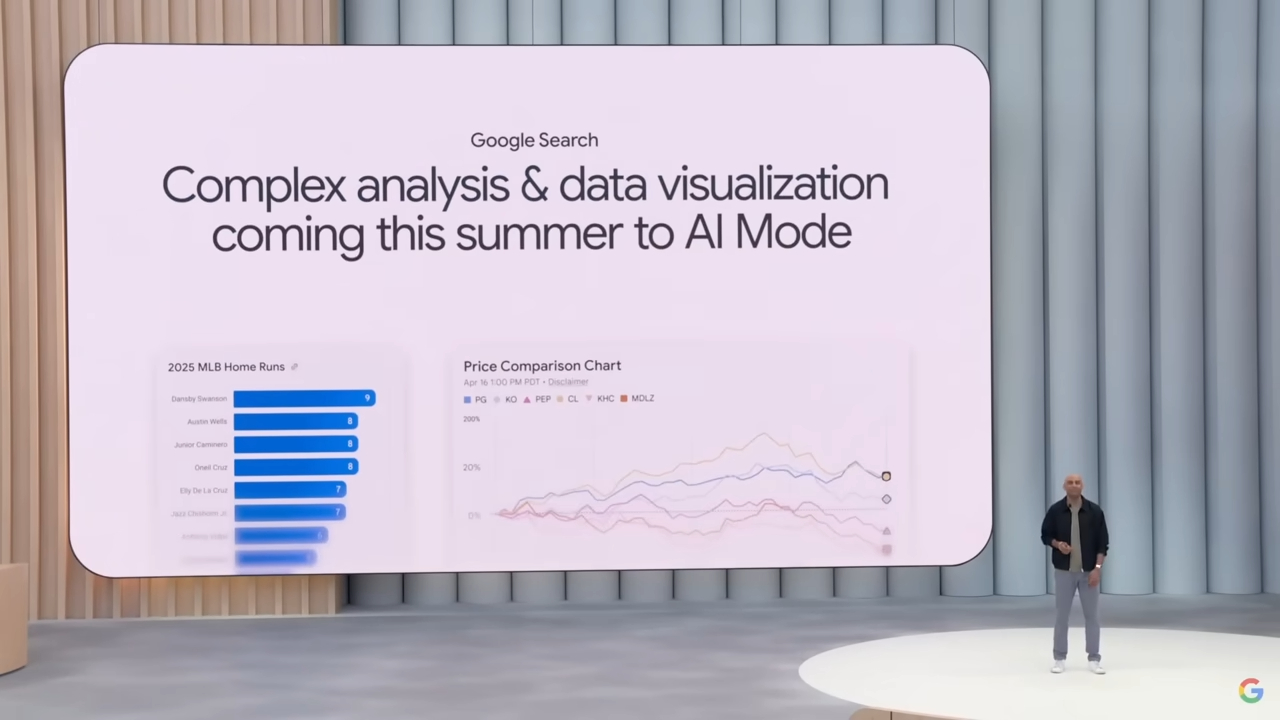
Google AI Mode Is Live: What It Means for SEO and How to Adapt
The SEO landscape is undergoing a seismic shift with the official rollout of Google AI mode. This groundbreaking change marks the evolution of Google from a traditional search engine into a fully integrated AI-powered answer engine. For marketers, content creators, and SEO professionals, understanding this shift — and learning to adapt — is not optional. It’s essential.
In this article, we’ll explore what Google AI mode really is, how it changes search behavior, why traditional SEO tactics are becoming obsolete, and how to future-proof your content strategy in this new era.
What Is Google AI Mode?
Google AI mode is Google’s next-generation search interface, powered by large language models (LLMs). It blends search results with AI-generated answers, significantly reducing the visibility of traditional organic results. Instead of returning a list of 10 blue links, Google AI mode displays concise answers and only a few citations (usually three).
This transformation follows the trend seen in local search results, where Google previously reduced the display from multiple business listings to a three-pack. With AI mode, Google now seeks to contain users within its ecosystem, delivering end-to-end answers without requiring users to visit external websites.
From Search Engine to Answer Engine
Why Organic Traffic Is Declining in AI-Powered Search
In the era of AI-powered search engines, users are no longer dependent on external pages to find information. Queries like “best running shoes” are now answered instantly, complete with reviews, comparisons, and direct shopping links — all embedded within Google’s interface.
Each follow-up query (e.g., “best place to buy them”) gets answered without ever leaving Google. The result? Even if your content is cited, users may never actually visit your site. This is the age of zero-click searches on steroids, powered by Google AI mode.
The Impact of Google AI Mode on SEO Strategy
Informational Content Is Losing Ground
Informational websites and media publishers are some of the biggest losers in this update. With AI responses front and center, Google is phasing out middlemen. Instead, it prioritizes end-service businesses — those providing a direct path to conversion.
If your website exists primarily to publish listicles, blog posts, or general knowledge content, expect to see a drop in traffic, even if your pages are cited in AI responses.
Why Google Wants to Keep Users On-Site
Google’s new role mirrors that of closed platforms like Facebook or ChatGPT. The objective is clear: keep users inside the ecosystem. AI mode provides immediate answers, reduces bounce rates, and increases the chance that Google can monetize the interaction through ads or native services like Google Shopping or Maps.
Detta betyder:
- Google doesn’t want users clicking away.
- Traditional SEO metrics like CTR and impressions may lose meaning.
- Brand visibility now depends on being integrated into Google’s AI knowledge graph, not just SERP placement.
How to Survive and Thrive in the Age of Google AI Mode
1. Don’t Scale Content — Scale Quality
In the age of generative AI, it’s tempting to mass-produce SEO content. But Google’s AI mode deprioritizes generic, low-value content — especially anything that could be recreated by AI in seconds.
Ask yourself: Can an AI generate this content instantly? If yes, it probably won’t rank or earn traffic. Instead, focus on:
- Original research
- Personal experience
- Expert commentary
- Unique frameworks or tools
These are elements AI cannot replicate — and what Google increasingly values in the AI era.
2. Publish With a Purpose, Not Just a Schedule
Stop publishing for the sake of activity. SEO content today must have a strategic intent — whether that’s to generate leads, build backlinks, attract shares, or establish brand authority.
Each piece of content should align with one of the following:
- Driving conversions (direct response)
- Supporting branded search growth
- Establishing topical authority
- Earning trust signals (reviews, testimonials, shares)
If content doesn’t support a measurable objective, it’s dead weight — especially in a Google AI search model where space is limited.
3. Focus on Topic Domination, Not Keyword Ranking
The smartest marketers today are shifting from SEO keyword ranking to topic domination. Think of your content ecosystem as a web — a collection of assets (YouTube, LinkedIn, podcast, blog, product pages) that all support a single commercial idea.
For example, instead of trying to rank a blog post for “best CMS for SEO,” aim to:
- Create YouTube reviews
- Launch LinkedIn discussions
- Publish blog comparisons
- Appear in Reddit threads
- Be cited in AI search results
This omnipresence strategy builds real brand equity, even if your main site’s organic traffic dips.
4. Optimize for AI Search Engines — Not Just Google
Google isn’t the only AI search player. Users are now turning to ChatGPT, Perplexity AI, and Google Gemini to get fast, synthesized answers. These LLMs cite sources — but only high-trust, high-authority sources.
To get included in AI search results, you need:
- High domain authority
- Branded search activity
- Consistent expert publishing
- Social proof and reviews
- Clear topical relevance (semantic SEO)
Think of this as Large Language Model Optimization (LLMO) — the new frontier of SEO.
5. Own as Much SERP Real Estate as Possible
While organic listings shrink, opportunities still exist — if you diversify your presence:
- Google-annonser
- Google Business Profile
- YouTube thumbnails
- People Also Ask
- Rika utdrag
- Reviews
By owning multiple placements in the SERP, you mitigate the risk of AI displacing your core listing. Treat SEO not as a single tactic, but as part of an integrated digital marketing strategy.
Local SEO in Google AI Mode: A Silver Lining?
Interestingly, local businesses may benefit from this update. In local search (e.g., “furnace repair St. Louis”), Google AI mode pulls from Google Maps and Business Profiles, driving more visibility to verified local providers.
Local businesses should double down on:
- Google reviews and ratings
- NAP consistency
- Service area optimization
- Google Posts and Q&A
- Click-to-call functionality
In AI mode, being a trusted local entity is more powerful than ever.
What to Stop Doing Immediately
If your current SEO strategy includes any of the following, it’s time to pivot:
- ❌ Mass-producing AI-written blog posts
- ❌ Publishing 3x a week without clear purpose
- ❌ Focusing solely on ranking blog articles
- ❌ Targeting high-volume, low-conversion keywords
Instead, focus on what AI can’t do: original thinking, real-world experience, community engagement, and omnichannel presence.
The Future: Search Optimization, Not Search Engine Optimization
Google AI mode marks the end of an era. We’re no longer optimizing just for search engines. We’re optimizing for:
- AI interfaces (ChatGPT, Gemini, etc.)
- Voice queries
- Embedded answers
- Visual interfaces (e.g., YouTube previews)
- Cross-platform discovery (social → search → purchase)
The new goal is visibility across every digital surface where your ideal customer might search, ask, or browse.
Final Thoughts: Adapt or Fade Away
The rollout of Google AI mode is not just an algorithm update — it’s a transformation of the entire search ecosystem. If your SEO strategy hasn’t evolved in years, now is the time to rethink everything.
Focus on:
- Becoming the go-to authority on your topic
- Delivering value beyond what AI can replicate
- Building a distributed digital presence
- Measuring business KPIs, not just clicks
SEO isn’t dead. But the definition of SEO has changed forever. The age of optimizing pages is giving way to the age of optimizing for AI.
Now the question is — will you evolve with it?
Keyword Optimizations Used:
- Google AI mode
- AI-powered search
- AI search engines
- large language model optimization
- future of SEO
- Google search AI
- SEO in the age of AI
- topic domination strategy
- zero-click search impact
- AI-generated search results

 Google AI Mode: Framtiden för sökmarknadsföring">
Google AI Mode: Framtiden för sökmarknadsföring">
